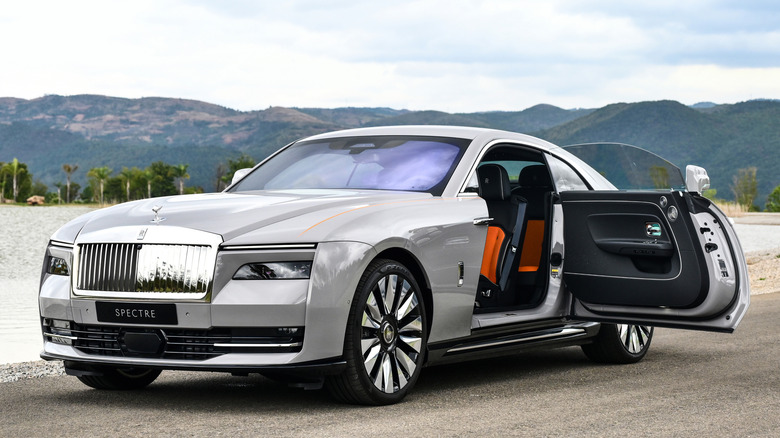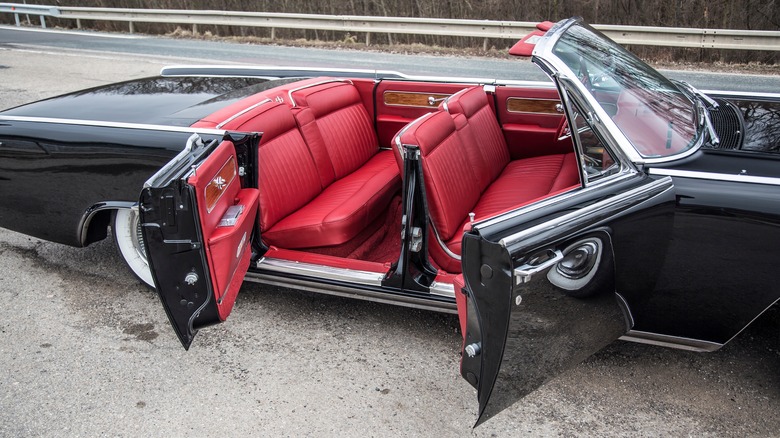What Are Suicide Doors And How Did They Get Their Name?
Suicide doors are car doors hinged to open at the rear instead of the front. While the vast majority of today's vehicles use front-hinged doors, rear-hinged or "suicide" doors have been around since the first animal-free people-carriers evolved from their predecessors — horse-drawn carriages. The history of suicide doors (some of it real and some fiction) has created a very colorful picture of what was once a very common automotive feature.
Suicide doors are alleged to have come by their nickname from use by American gangsters, who were thought to eliminate their rivals and betrayers by pushing them out of the rear-hinged doors of moving vehicles. Whether this is a Hollywood portrayal or gangster legend, nobody really knows. But the name stuck, and suicide doors have thus become a part of the automotive lexicon.
There is one undeniable benefit to suicide doors — improved ease of entry to the vehicle. In the horse-drawn carriage days rear-hinged doors were common. This door design made entering a coach or carriage much easier, especially for upper-class women wearing long, flowing dresses. This type of door was ported over to the original automobile, also initially owned by the wealthy classes, as internal combustion and early electric cars like the Baker Electric in the 20th century. As car ownership became more common among the middle and lower classes, rear-hinged doors remained a common design feature throughout the 1920s, 1930s, and even up to World War II.
Why are there so few cars with suicide doors today?
After WWII, many changes were made to the American automotive scene. The Interstate Highway System was built, bringing with it better, safer roads and higher speed limits. The main downside of suicide doors is their ability to get blown open by the airstream if a latch should come undone while the car is moving, potentially taking the nearby occupant with it. Add higher speeds and a lack of seatbelts and you have a recipe for disaster. At least, that's what Ralph Nader thought. He railed against the hazards of suicide doors in his 1965 book "Unsafe at Any Speed."
You can occasionally find vehicles that incorporate suicide doors into their designs. The best-known of these might be the 1961 to '69 Lincoln Continental, shown above. There are some others, more recent, which have rear-hinged rear doors that can't open unless the front doors are also open, such as the Mazda RX-8, BMW i3, Toyota FJ Cruiser, and Honda Element.
The use of suicide doors today has more recently returned with manufacturers revisiting this feature for the same crowd that employed them in the era of horse-drawn carriages: the wealthy. Case in point is the Rolls-Royce Spectre EV, a four-person coupe with an MSRP of $422,750. It features powered suicide doors, shown in the photo atop this article. Aside from rarities like the Spectre, however, suicide doors are a classic car feature that is unlikely to make a comeback in any major way.

